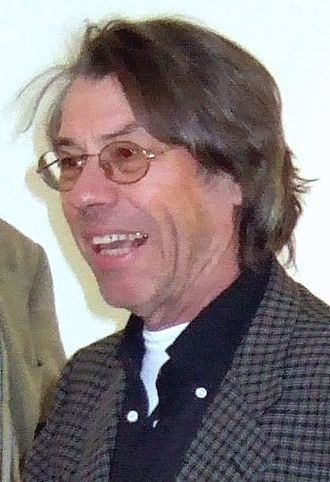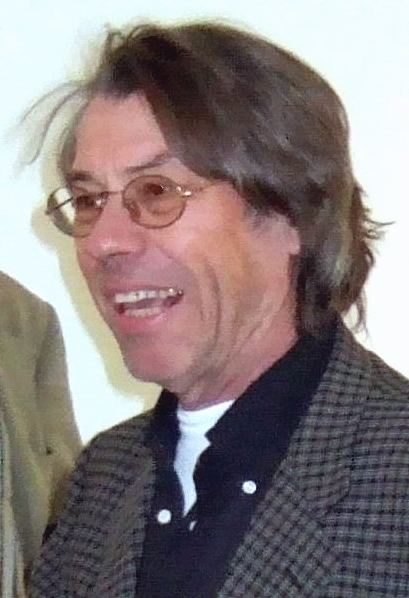Nationality German Name Hannes Heer Known for Wehrmachtsausstellung | Occupation historian Other names Hannes Heer | |
 | ||
People also search for Klaus Naumann, Volker Ullrich, Peter Schmidt | ||
War crimes of the wehrmacht hannes heer
Hans Georg Heer (known as Hannes) (born 16 March 1941 in Wissen, Rhine Province) is a German historian, chiefly known for the "Wehrmachtsausstellung" (German Army Exhibition) in the 1990s. While highly controversial at that time, the exhibition is nowadays widely credited with opening the eyes of the German public to the war crimes of the Wehrmacht committed on the East Front during World War II. While having been suspended in 1999, the exhibit reopened in 2001 under the name "Crimes of the German Wehrmacht: Dimensions of a War of Annihilation 1941-1944".
Contents
- War crimes of the wehrmacht hannes heer
- Der historiker hannes heer zur rolle der wehrmacht im zweiten weltkrieg
- Activity in socialist organisations
- Wehrmachtsausstellung
- Publications
- References

Der historiker hannes heer zur rolle der wehrmacht im zweiten weltkrieg
Activity in socialist organisations
As a student, he became a member of the left-wing Sozialistischer Deutscher Studentenbund, where he was a leading member of the communist faction that supported the banned Communist Party of Germany. In the 1970s he was several times convicted of coercion, trespassing, vandalism and other criminal offenses. Being considered a political extremist according to the Radikalenerlass, he was banned from employment in the public service and could not work as a teacher. Heer is a dedicated antifascist
Wehrmachtsausstellung
In 1993, he was employed by the Hamburg Institute for Social Research and became known for the controversial "Wehrmachtsausstellung" (German Army Exhibition) focused on German war crimes and atrocities during World War II. The Polish historian Bogdan Musial pointed out in an article published in 1999 that a number of photos that allegedly portrayed "Wehrmacht war crimes" in reality were photos of Soviet war crimes committed by the Red Army, and also stated that around half of all photos used in the exhibition had nothing to do with war crimes. The Hungarian historian Krisztián Ungváry claimed that only ten percent of all the 800 photos of alleged war crimes were actually Wehrmacht crimes, the rest were Soviet war crimes or crimes committed by Hungarian, Finnish, Croatian, Ukrainian, Russian or Baltic forces, or by members of the SS or SD, none of whom were members of the Wehrmacht, or not crimes at all Military historian Rolf-Dieter Müller, Scientific Director of the German Armed Forces Military History Research Office, stated that the exhibition was deliberately misleading.
After criticisms about incorrect attribution and captioning of some of the images in the exhibition, the exhibition was withdrawn by the director of the Hamburger Institut für Sozialforschung in 1999 and Hannes Heer, who refused to acknowledge the criticism, was fired from the institute in the following year and excluded from work on the investigation of and subsequent revision of the exhibition by the institute.
The display was suspended pending review of its content by a committee of historians. The committee's report in 2000 stated that accusations of forged materials were not justified, but some of the exhibit's documentation had inaccuracies. About one per cent of photographs had been incorrectly attributed: "A commission of historians, while confirming the fundamental thesis of the display, discovered that 20 of the 1400 photographs depicted Soviet crimes, that is, murders by NKVD, rather than the acts of German soldiers."
The following is a plausible explanation on how the mislabeled photos ended up in this exhibit:
As for the specific pretext for closing down the exhibit—a few incorrect photo captions—this was attributed to a lack of attention in linking photographs with specific historical events. The pictures in question were found in Eastern European archives after the fall of the Stalinist regimes in 1989-90. Under the Stalinists, they had been catalogued as “documents of Nazi crimes”.It is not known whether this had occurred as a result of express instructions, in order to cover the tracks of the real culprits, or simply because the archivists preferred to avoid certain difficulties. In any case, those responsible for organizing the exhibit included this material without any closer inspection.The commission found that the arguments presented were too sweeping, yet reaffirmed the reliability of the exhibition in general:
The fundamental statements made in the exhibition about the Wehrmacht and the war of annihilation in 'the east' are correct. It is indisputable that, in the Soviet Union, the Wehrmacht not only 'entangled' itself in genocide perpetrated against the Jewish population, in crimes perpetrated against Soviet POWs, and in the fight against the civilian population, but in fact participated in these crimes, playing at times a supporting, at times a leading role. These were not isolated cases of 'abuse' or 'excesses'; they were activities based on decisions reached by top level military leaders or troop leaders on or behind the front lines.The committee recommended that the exhibition be reopened in revised form, presenting the material and, as far as possible, leaving the formation of conclusions to the exhibition's viewers. The revised exhibition was now named Verbrechen der Wehrmacht. Dimensionen des Vernichtungskrieges 1941–1944. ("Crimes of the German Wehrmacht: Dimensions of a War of Annihilation 1941-1944"). It focused on public international law and travelled from 2001 to 2004.
